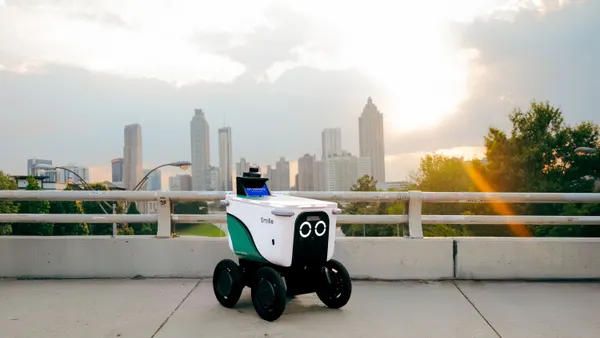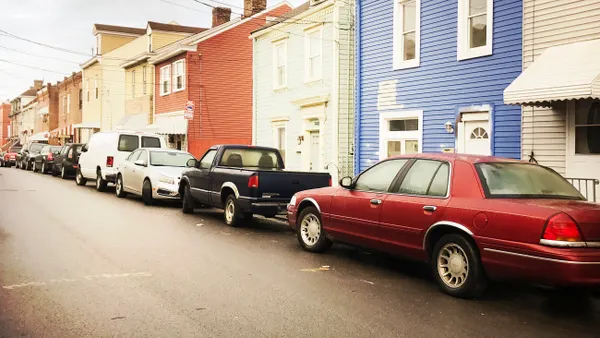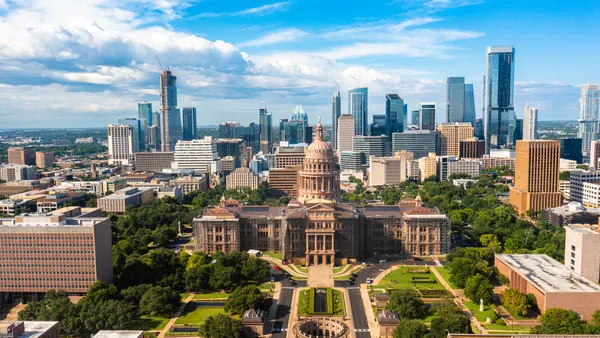Dive Brief:
- San Francisco's board of supervisors recently passed an ordinance imposing restrictions on delivery robots on city streets. Operators will need to secure permits before their robots show up on streets.
- Companies are restricted to operating three robots each, and the city is limited to a total of nine robots at any given time. Robot use is also limited to low-foot traffic areas such as industrial parks. The devices cannot travel more than 3 mph and human operators must be within 30 feet.
- Each month, the permitted operator must share any data collected during testing — including GPS and photographic data — with the city.
Dive Insight:
This move is rather surprising for San Francisco, considering its reputation as a liberal tech hub with a willingness to support startups and disruptive ideas. Although companies like GM are allowed to test autonomous cars on the streets of San Francisco, the city has cracked down on autonomous delivery robots that also operate with sensors to avoid obstacles. The city is also known for its push toward environmentally-friendly policies, which proponents claim the robots are. The small devices cut down on the amount of vehicles needed for food and goods deliveries, and therefore on greenhouse gas emissions.
As harsh as some of the restrictions are, the supervisor who proposed the legislation originally wanted a complete ban on delivery robots and indicates that the ordinance is a compromise. But relegating the robots to sparsely-populated areas severely hinders businesses' ability to test the devices in real-life settings. And without real-life tests, the products' future is iffy.
On the other hand, the robots are motorized devices that take up room on sidewalks, a space reserved for pedestrians where other obstacles — bicycles and scooters, for example — already are prohibited. Despite their slow speeds, the robots sometimes are labeled as obstacles and can be particularly troublesome for people with disabilities to navigate around.
Still, the ordinance is viewed as a major blow to technology startups and advancing their innovations. Instating regulations to ensure residents' safety is one thing, but this ordinance may blur the line between safety measures and restricting business. It toes the line of big government overreaching its boundaries into the private sector. For example, the mandate that private businesses share with the government monthly all of the product testing data they gather should raise some eyebrows.
The strong reaction to the delivery robots is perhaps partially due to the human reaction to losing more jobs to automation. Job creation is a major political issue, so as more jobs are threatened it would not be surprising to see more politicians hop on board with restricting the use of robots and other automated devices.











